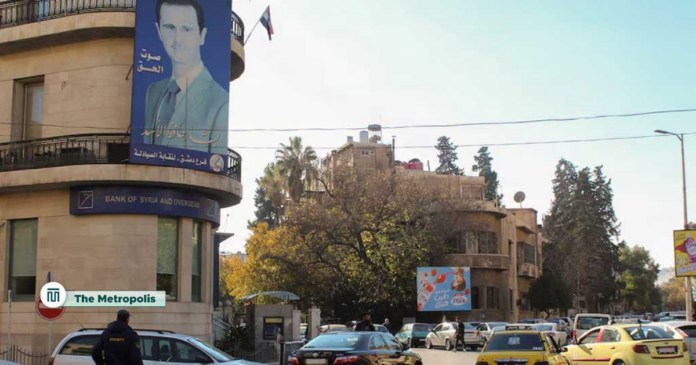Two senior army officers told Reuters that Syrian President Bashar al-Assad took a plane Sunday to an unspecified location, while rebels claimed they had entered the capital without seeing any army deployments.
Witnesses reported witnessing thousands of people chanting and waving “Freedom” as they gathered in a central Damascus square, both in cars and on foot.
The rebels declared, “We celebrate with the Syrian people the news of freeing our prisoners, releasing their chains, and announcing the end of the era of injustice in Sednaya prison.”
The Syrian government held thousands of people at the sizable military prison known as Sednaya, which is located outside of Damascus.
According to data from the Flightradar website, a Syrian Air aircraft took off from Damascus airport in the vicinity of the rebel-held capital.
The plane first headed for the coastal area of Syria, which is a stronghold of Assad’s Alawite sect. However, it abruptly turned around and flew in the opposite direction for a few minutes before vanishing from the map.
Reuters was unable to determine who was on board right away.
After just one day of fighting, rebels declared they had taken complete control of the crucial city of Homs just hours earlier, casting doubt on Assad’s 24-year rule.
Although the origin of the shooting was not immediately apparent, two residents reported hearing intense gunfire in the heart of Damascus on Sunday.
In rural regions southwest of the capital, local youths and ex-rebels used their newfound power to demonstrate against the authoritarian rule of the Assad family by taking to the streets.
After the army left the central city, thousands of people from Homs poured onto the streets, chanting and dancing, “Assad is gone; Homs is free,” and “Long live Syria, and down with Bashar al-Assad.”
In a dizzying week-long military retreat, the Syrian president’s territorial control collapsed, and youths tore down posters of him while rebels fired into the air in celebration.
The fall of Homs cuts Damascus off from the coastal area that is the stronghold of Assad’s Alawite sect and where his Russian allies have an air base and naval base, giving the insurgents control over Syria’s strategic heartland and a crucial highway crossroads.
The capture of Homs also serves as a potent metaphor for the rebel movement’s spectacular resurgence in the 13-year-old conflict. Years ago, grueling siege warfare between the army and the rebels destroyed swaths of Homs. The fighting crushed the insurgents, driving them out.
The principal rebel leader of Hayat Tahrir al-Sham, Abu Mohammed al-Golani, referred to the capture of Homs as a historic event and warned combatants not to hurt “those who drop their arms.”
In the city prison, rebels released thousands of prisoners. Security personnel quickly burned their documents and left.
On Saturday night, citizens of many districts in Damascus demonstrated against Assad, and security forces were unable or unwilling to enforce the law.
Hassan Abdul Ghani, the commander of the Syrian rebels, said in a statement early on Sunday that rebel forces were aiming for the capital and that efforts were underway to “completely liberate” the countryside surrounding it.
A statue of the late President Hafez al-Assad, Assad’s father, was destroyed in one suburb.
Assad was still in Damascus, according to state television on Saturday, and the Syrian army said it was reinforcing the area.
Over the course of a day, the rebels managed to seize control outside the city.
Existing Danger to the Assad Rule
The fall of Homs and the threat to the capital pose an immediate existential threat to the Assad dynasty’s five-decade rule over Syria and the ongoing influence of its primary regional backer, Iran.
The rapidity of the events has alarmed Arab capitals and sparked concerns about a fresh round of instability in the region.
A joint statement from Qatar, Saudi Arabia, Jordan, Egypt, Iraq, Iran, Turkey, and Russia called for a political solution and described the crisis as a dangerous development.
As the Syrian situation changed hourly, there was no sign that they had reached an agreement on specific actions.
The 2011 uprising against Assad’s rule that sparked Syria’s civil war attracted major foreign powers, gave jihadist militants a platform to plan attacks globally, and forced millions of refugees into neighboring countries.



